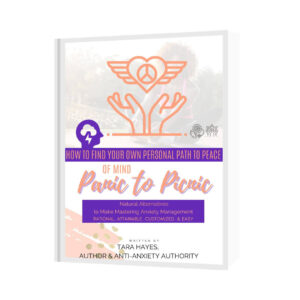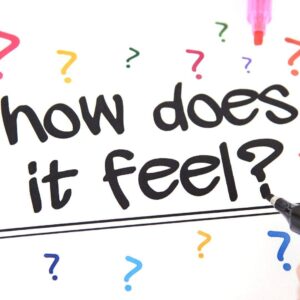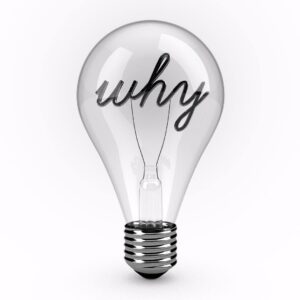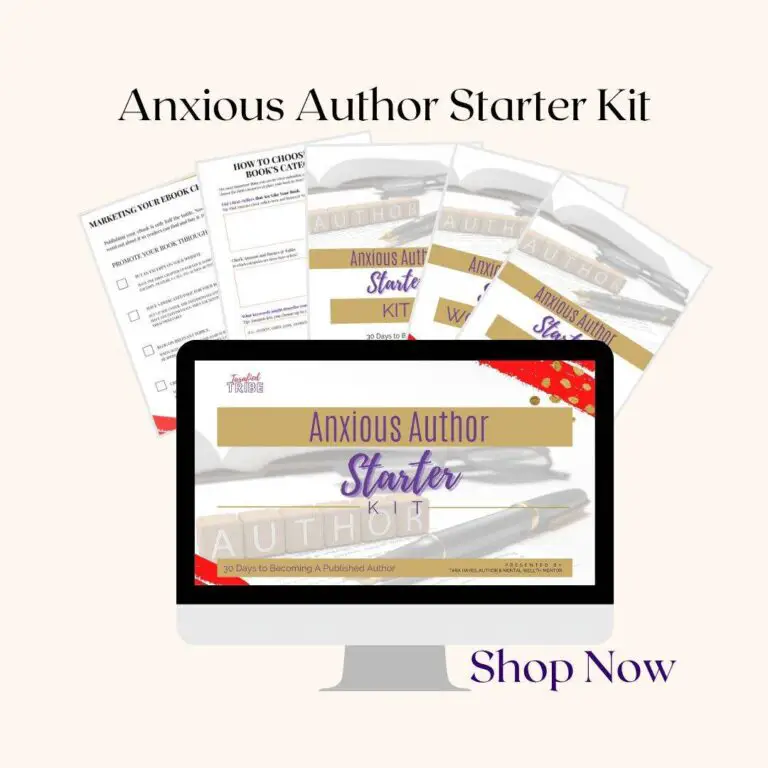How to Write a Descriptive Paragraph: A Friendly Guide
Writing a descriptive paragraph can be a very exciting and enjoyable process when you know what you’re doing. If you don’t know what you’re doing, it’s frustrating. As you begin your journey to descriptive writing excellence, it’s imperative to understand its importance. Let’s dive right into how to write a descriptive paragraph.

Introduction
When I wrote my first book, admittedly writing a descriptive paragraph was not on my checklist. That’s because naturally, I’ve always been a good writer, so I created an outline for my topic and called it a day. Now that I’ve been writing my blog for a few years, I know that there are specific guidelines that every writer must follow – both new writers and seasoned writers.
Descriptive paragraphs play an important role in creating very engaging content.
Nobody wants to read a plain, boring article with no descriptions. Think about the last fiction or nonfiction book that you’ve read. I’m almost certain you wanted to read about the character’s physical appearance from their hair color, body type, and dressing style.
I’m sure you also wanted to learn the emotional state of each character, whether they were happy, sad, angry, or scared in a specific scenario. Why is that? It’s because descriptive paragraphs illustrate a picture in the reader’s mind with words, allowing them to visualize and experience the topic more vividly.
The first step is to identify your topic for the descriptive paragraph. As I mentioned when I wrote my books, I created an outline around my topic. This may be a specific topic assigned to you or a subject you are passionate about.
I wrote my books about my experience with anxiety. I wasn’t particularly passionate about anxiety but passionate about the natural remedies I began applying to my life to manage it and share them with others.

The next thing you want to do is ensure that you have a clear understanding of your topic. I could never write about a topic that I wasn’t interested in. The only way to create engaging content is to have an interest in it and clarity on your topic.
Your goal in descriptive writing is to bring the scene, object, or person you’re describing to life for your readers, so choose a topic that you find interesting or meaningful.
Once you have your topic, focus on descriptive language that appeals to the various senses.
Examples of appealing language are beautiful, adventurous, soft-spoken, amazing, and sincere. Descriptive words will help capture the imagination of your readers in the experience you’re describing, as well as hold their attention throughout the article.
Remember, successful descriptive paragraphs take your readers into the world you’re creating, making them feel as if they’re right there with you.
I also find that when writing a descriptive paragraph, I can always take it one step deeper. For example, I may write a sentence as such, “he was tall, dark, and handsome.” I could take it one step deeper and say, “he was tall, dark, handsome, with big brown eyes and an amazingly bright, white smile.” I can even take it one step further than that! And that’s the beauty of descriptive writing.
Not only do you want your paragraphs to be descriptive, but you want them to be transparent. Descriptive writing and transparency go hand-in-hand, especially if you’re writing non-fiction. I was transparent in my books about my life with anxiety.
I described every detail that I could recall. I wrote down every fear, and every thought that I could think of that negatively impacted my life. And then at the end of both books, I detailed natural remedies that have helped me heal from my anxiety.
Furthermore, I’ve successfully been able to write descriptively in much of my work, especially in this blog post, HERE>>. A reader informed me that she loved my writing, which made me feel proud of myself.
Definition of Descriptive Writing
What is descriptive writing? Descriptive writing is a style that focuses on creating a vivid, detailed, and accurate depiction of a subject, be it a place, an object, a person, or a general idea. In other words, just by reading the content, you will be able to picture every scene in your mind’s eye.

I can recall a story that I wrote back in high school. I titled it, Never Judge a Book By Its Cover. I won’t bore you for too long with my high school paper but I remember writing about a black college girl who was dating a young black man she met in college.
The young man’s appearance did not match his academics. He wore a do-rag, baggy pants, a dingy torn used-to-be white undershirt, timberland boots, big gold chains, and gold teeth. She brought him home to her parents and they disapproved of him on the spot because of his appearance.
She told her parents about how smart and successful he was in school and the parents were utterly shocked. The parents wrongfully judged him, hence the title of the paper, Never Judge a Book By Its Cover. The only reason why I can recall a paper that I wrote almost 20 years ago so well is due to the way I described my characters, specifically the young man being judged.
At the time, I didn’t know the textbook term to describe my writing. I wish I knew where that paper was so I could read it and evaluate how my writing style has evolved.
If the writing doesn’t take your mind to another place through visualization, then it is not descriptive.
I bet you could visualize my character from my high school paper by the words that I chose to describe him. Furthermore, by using the five senses and purposeful words, you can grab your readers’ attention and engage them in the experience you’re describing.
In this section, we’ll explore the key aspects of effective descriptive writing.
Characteristics of Effective Descriptive Paragraphs

An effective descriptive paragraph should have the following characteristics:
Clarity: Get clear on your writing topic as far as who and what it’s about. Use language that your reader can identify with and visualize what you’re describing.
Vividness: Use strong, descriptive words to create a clear picture of the topic for your reader.
Organization: Paragraph structure matters. Don’t make them too long or your readers will get bored and leave your work unread. Build each sentence on the previous to tell a story that makes sense sequentially.
The Role of Sensory Details in Descriptive Writing

Sensory details play a significant role in descriptive writing. By engaging the five senses – sight, sound, smell, taste, and touch – you can create a more captivating experience for your reader.
Here’s a quick guide to using sensory details effectively:
Sight: Describe colors; hair color, eye color, and color of furniture if it applies. Consider the time of day. For example beautiful, sunny daylight or a dark shadowy night. Bright blue sky. You get the point.
Sound: Capture the essence of a scene by mentioning background noises or distinct sounds. For example, a loud thump, blaring sirens going off, shrieking screams of a crowd enjoying themselves at a concert.
Smell: Describe any specific scents or aromas that help detail the environment or character of the topic. This can be a pleasant smell such as the aroma of chocolate chip cookies baking in the oven or an unpleasant smell such as hot garbage.
Taste: If this applies, describe the flavor of a dish such as warm baked cinnamon apple pie. Hmmm, I’m making myself hungry.
Touch: Describe the textures, temperatures, and physical sensations your reader might experience when interacting with the specific topic. For example, feel the crisp Fall air as it harshly whips your long soft brown hair back into your face. Do you see how I used texture, temperature, and physical sensation all in one descriptive sentence? Hopefully, you’re nodding your head yes.
Creating Expressive Images With Words

To create expressive images in your descriptive writing, try using metaphors and similes. It’s been a while since I’ve been in school so I honestly forgot the meaning of metaphor and simile. I’m not ashamed to admit it.
Once I researched to write this article, I was reminded of the definitions. Here they are again in case you needed the reminder as well.
Metaphors compare two unrelated items as if one is the other, while similes compare using “like” or “as.” These techniques can help you get across your emotions more effectively. Examples include:
Metaphor: I’m hotter than a firecracker.
Simile: She was running as fast as the wind.
By including details that appeal to the senses, language that you use naturally but don’t know the formal definition(figurative language), and carefully chosen words, your descriptive paragraphs can engage readers and bring your topic to life. Remember to keep it friendly, short, and sweet.
Preparing to Write Descriptively
Identifying the Purpose of the Paragraph

Before you even think about writing anything descriptive, first recall why you’re writing it in the first place. Ask yourself what you are looking to achieve with your writing. Why are you describing this particular situation or person?
My why for sharing my anxiety story was to help others heal while I healed myself. I was struggling with anxiety for years and was afraid that I would be stigmatized for having it. But I finally found the courage to document my journey as I began to heal from it naturally.
Knowing your why will help you find the right words and the tone. If your goal is to inspire your readers, you want to choose words that will help them connect with you and make them feel like they know you.
If your goal is to entertain your readers, use words that will make them laugh and have a good time.
I’ve been told by several readers that they felt like they knew me and I took them on my journey with me just by reading the words that I wrote down. It was an incredible feeling each time I received that feedback.
Analyzing the Target Audience

Knowing your target is very important. A mistake that plenty of first-time authors make is not knowing their target audience before creating their content. I’ve made this mistake as well.
When I wrote my books I had myself in mind. I didn’t consider demographics, age, gender, or what readers could achieve as a result.
I thought my target audience was people dealing with anxiety. In reality, my target audience was anxiety sufferers who had enough and were ready to take it by the reins. My books mainly attracted those who were not yet ready to begin their personalized peace plan.
What I’ve learned in my own experience with anxiety is that you have the power to stand up against it. Let me get back on topic. I’ll save my anxiety story for another blog post.
Anyway, luckily I did share practical advice that pretty much anyone with anxiety could relate to and apply in their life. In my future writings, I will be more specific. Perhaps I will target young adults specifically or career-focused young adults.
One day I will finish my third book which will tell the truth about self-publishing and the mistakes I’ve made along the way. Anyway, writing styles for young adults will not be the same for older adults so tailor your writings to suit your audience. I like to write in a more conversational tone so my writings most likely won’t suit academic audiences.
Research Your Topic to the T

After knowing your why, please do your due diligence and research the heck out of your topic. Research should be conducted before and after niching down your target audience. Before writing my books on my experience with anxiety, I did my research.
I researched the types of anxiety I’ve experienced and I also researched natural remedies that I began applying to my life. I did my research on Agoraphobia, Health Anxiety, Social Anxiety, etc. Just about any form of anxiety you can think of, I’ve had it.
Research is the only way to ensure that your content is on point. You can listen to podcasts, read books, or even interview people. I recalled several events from my life to help put my story on paper.
For my second book, I searched for bloggers and inspirational leaders in the wellness space and studied how they spoke to their audience. I’d follow their social accounts and read up on their blogs. If you are writing an autobiography on your favorite celebrity, study him or her and gather as much information from several resources.
Gathering Relevant Information and Ideas

Once you’ve discovered your why, analyzed your topic, and researched it thoroughly, the next thing to do would be to gather relevant information and ideas. Add in all of your fun facts, favorite quotes, and personal experiences (I’ve been doing that throughout the article) to enhance your writing. In my books(yes I’m talking about my books again), I referenced a few song lyrics and some celebrities that I know have anxiety.
I added a few quotes and some techniques to alleviate anxiety that I learned about in therapy. One technique that I recommended was journaling. Journaling can be used not only for anxiety, but descriptive writing.
Describe how your day went in full detail-whether it was amazing or crappy. Also, to take things up a notch with engagement, make sure to use intriguing comparisons known as similes.
I.e. Her skin was as smooth as a baby’s bottom. This is kind of an overused Simile but it was the first thing that came to mind. I bet you’re visualizing a baby’s bottom now, right? If you are, I’ve accomplished helping you visualize the topic.
Always remember that the number one key to creating engaging content is helping your readers create a vision in their minds.
Creating a Captivating Opening

The Impact of a Strong Introduction
The introduction is so important because it sets the tone for your entire piece. If you have a crappy opening, no one will stay to read the rest of your crappy paragraph. I can be a little sarcastic at times.
Anyway, you want to open with a question that makes your readers think and also tug at their emotions. My own story opens as follows:
Anxiety: This is too hard. I can’t write a book. No one knows who
I am or want to read this. I’m overwhelmed.
You: Yes I can! I know if I keep writing I can do it.
Anxiety: No you can’t. Just give up.
You: I will never give up.
So on and so forth the battle continues.
Does this sound like you?
It’s an example of me battling the anxiety in my mind and then I ask the question, Does this sound like you? The purpose was obviously to engage my readers. Either my readers will be able to relate or not but I’m willing to bet that most people can relate and nod their heads, yes.
Techniques for Grabbing the Reader’s Attention

Do you want to learn how to grab your reader’s attention? By my asking, that question probably grabbed yours- hopefully.
There are several ways to do this in your writing. First things first, set the scene of your paragraph. Is the tone of your introduction happy or sad?
Describe the place. Is it a dark and stormy night? Is it a warm Summer day in the local park?
Give as much detail as possible so that your readers can visualize.
The next thing to do would be to introduce the person or topic of your paragraph. If it is a person, describe him or her thoroughly but don’t overdo it. Describe their significance to the story.
Tell your audience what makes the character interesting or unique. How old is your person? Are they male or female?
Is he sexy? Why is she gorgeous? What makes he or she successful?
What makes them a badass? By doing this, the readers will be able to connect with the person on an emotional level. Even including the person’s favorite musical artist could engage your reader. You’ll never know!
If the subject is about a place, describe it! Is it a home? Describe the pathway to the house.
Is the home a large mansion in Beverly Hills? How many cars are out front and what are the colors? Car type? You get the idea. Give as many relevant details as possible.
Lastly, use specific words to illustrate a clear, impressive picture. Consider using intriguing similes and metaphors (those figurative words again) to enhance your descriptions, bringing the words off the paper.
For example, if you’re describing a busy marketplace, you can use a simile such as “it was jammed packed in the marketplace like bumper-to-bumper traffic in New York City” to create a lasting impression in the reader’s mind.
Using Descriptive Hooks to Set the Tone

A descriptive hook can set the tone for your writing. It’s usually the opening sentence. As I mentioned previously the opening of my book describes my inner turmoil with anxiety.
When reading my opening, readers will know my book is about my mental health journey.
A hook doesn’t always have to be words.
It could be an image that appeals to the reader’s imagination. Whatever you have to do to hook your readers and help them stay engaged should be implemented.
Final thoughts
Also, remember to add your personal experience as this will cause your reader to be drawn to you. You want them to be experiencing the scene with you.
One of my favorite movies is Mean Girls and there’s a scene in the movie where Damian and Janis are watching a scary Movie. As movie watchers, we can see the fear and suspense on both of their faces while anticipating what would come next in the movie.
Then Cady sneaks up on them dressed as the Bride of Frankenstein, they both scream and spill their popcorn all over them. If you’ve seen Mean Girls, you know exactly what I’m talking about.
I bet you could even visualize the scene in your head. The point that I’m making is the scary movie engaged both Damian and Janis in fear, suspense, and anticipation.
Your book should engage readers in the same way. Make them laugh. Make them cry or scare the crap out of them.
Again, make sure to include elements such as a person, place, event, and setting in your opening so that you can help create a clear and compelling context for the rest of your paragraph.
Utilize unique word choices, similes, and metaphors(those big figurative words again), to impress your readers and invite them to want to read more.
Frequently Asked Questions
In a descriptive paragraph, the key elements include clarity on the topic, specific sensory details, and accurate language. You should focus on creating a strong visual image in the minds of your readers. Describe the features of the subject or person.
Detail the environment by using language that appeals to the senses. Describe sights, sounds, smells, tastes, and textures, as well as any emotions or feelings associated with your topic.
To make people want to read your work and engage, change up your vocabulary. Use fun words such as similes and metaphors(those big figurative words). Also, add in your personal experience as this will cause your readers to connect with you. Make them curious and tug at their heartstrings by helping them to experience you as a person.
When describing a person in a paragraph, focus on their appearance, personality, habits, and behavior. Include their physical features, clothing, body language, mannerisms, how they speak, and emotions. You want to create an image that will last in your reader’s minds.
You don’t have to use them all so don’t overthink it. Recall the example I gave earlier in my high school paper. I described my character’s appearance more than anything. I didn’t go into much detail about his mannerisms and emotions.
Need help writing a descriptive paragraph? Book a Call with me, HERE.
Relatable Link:



